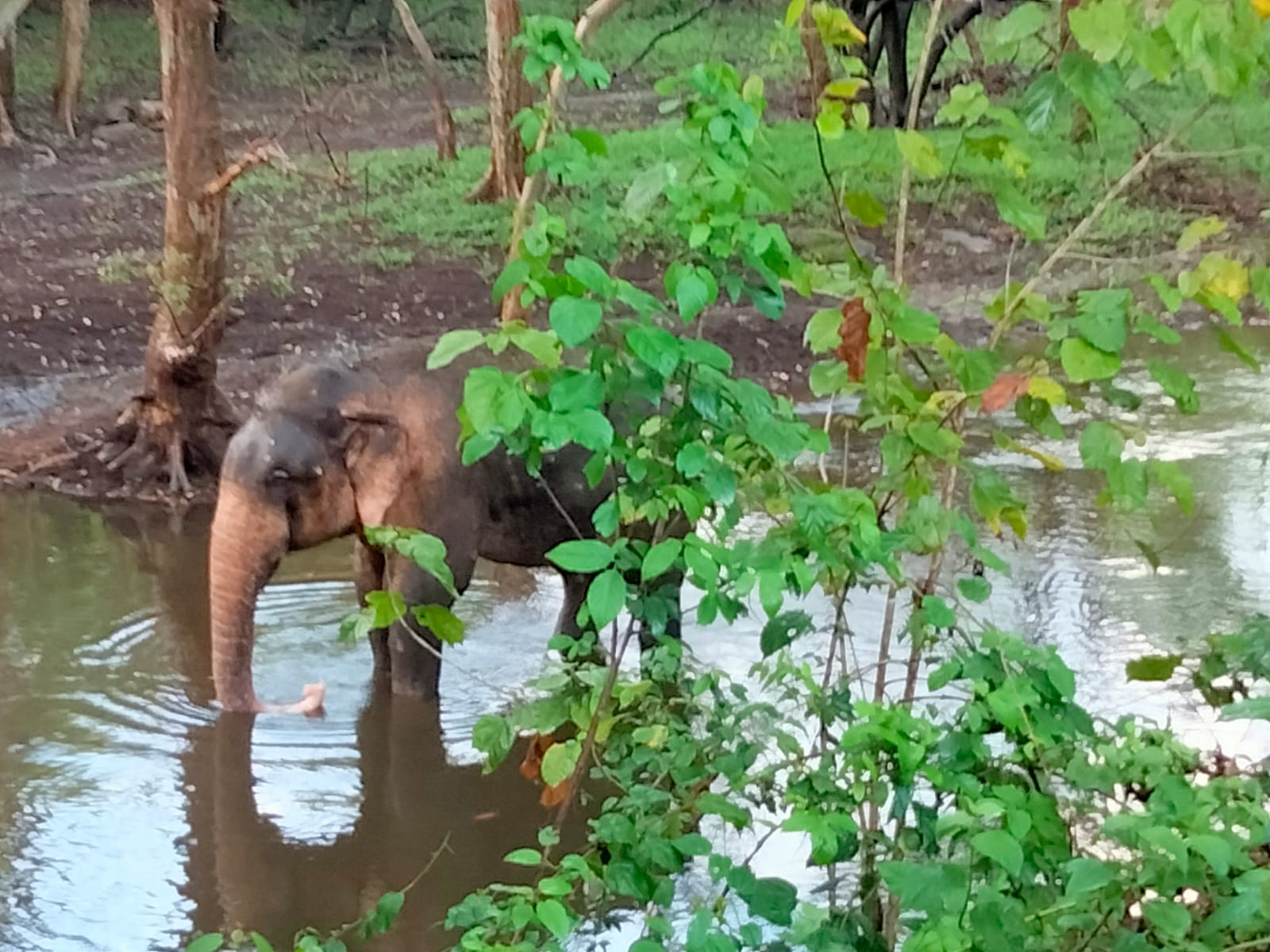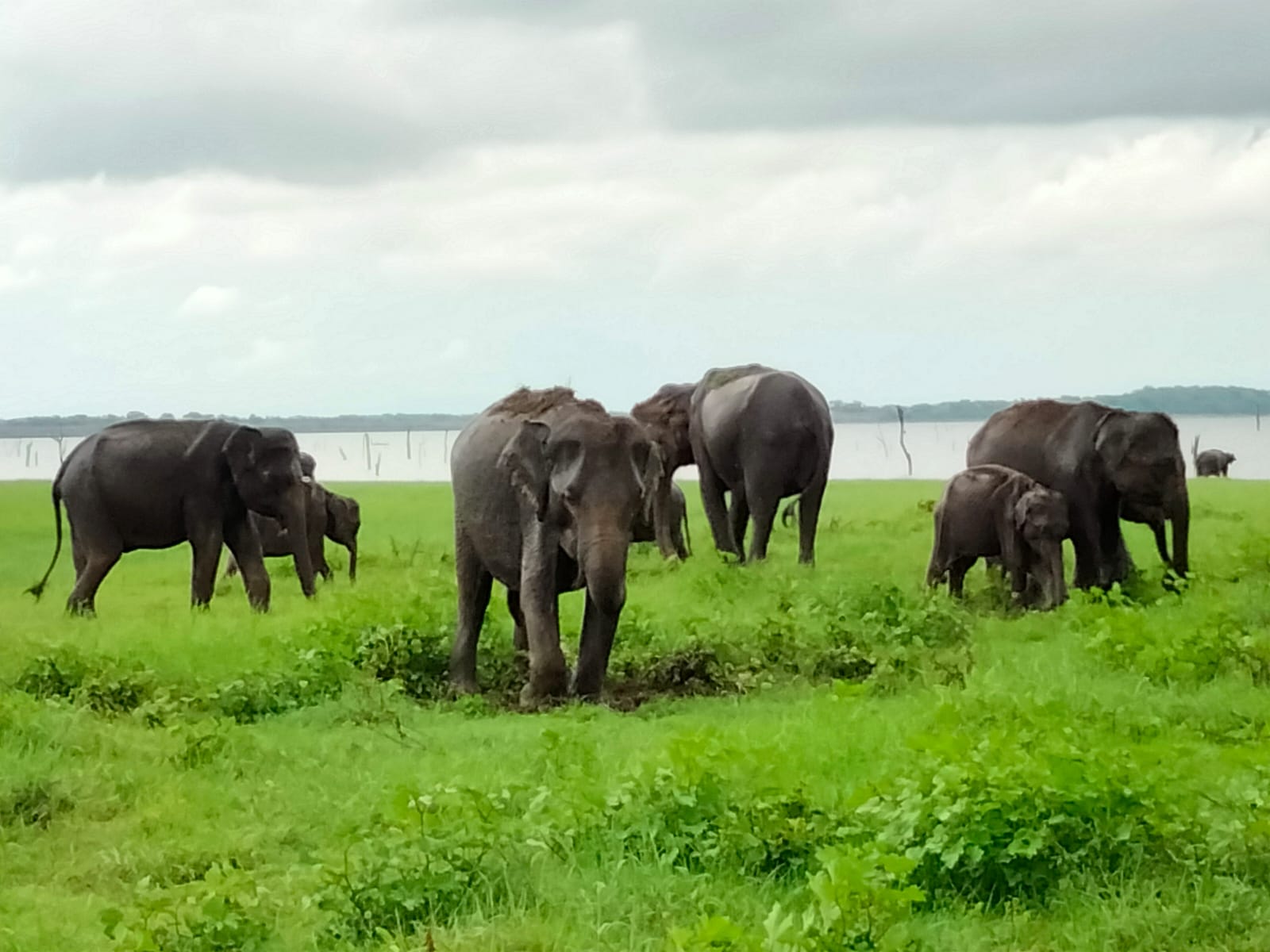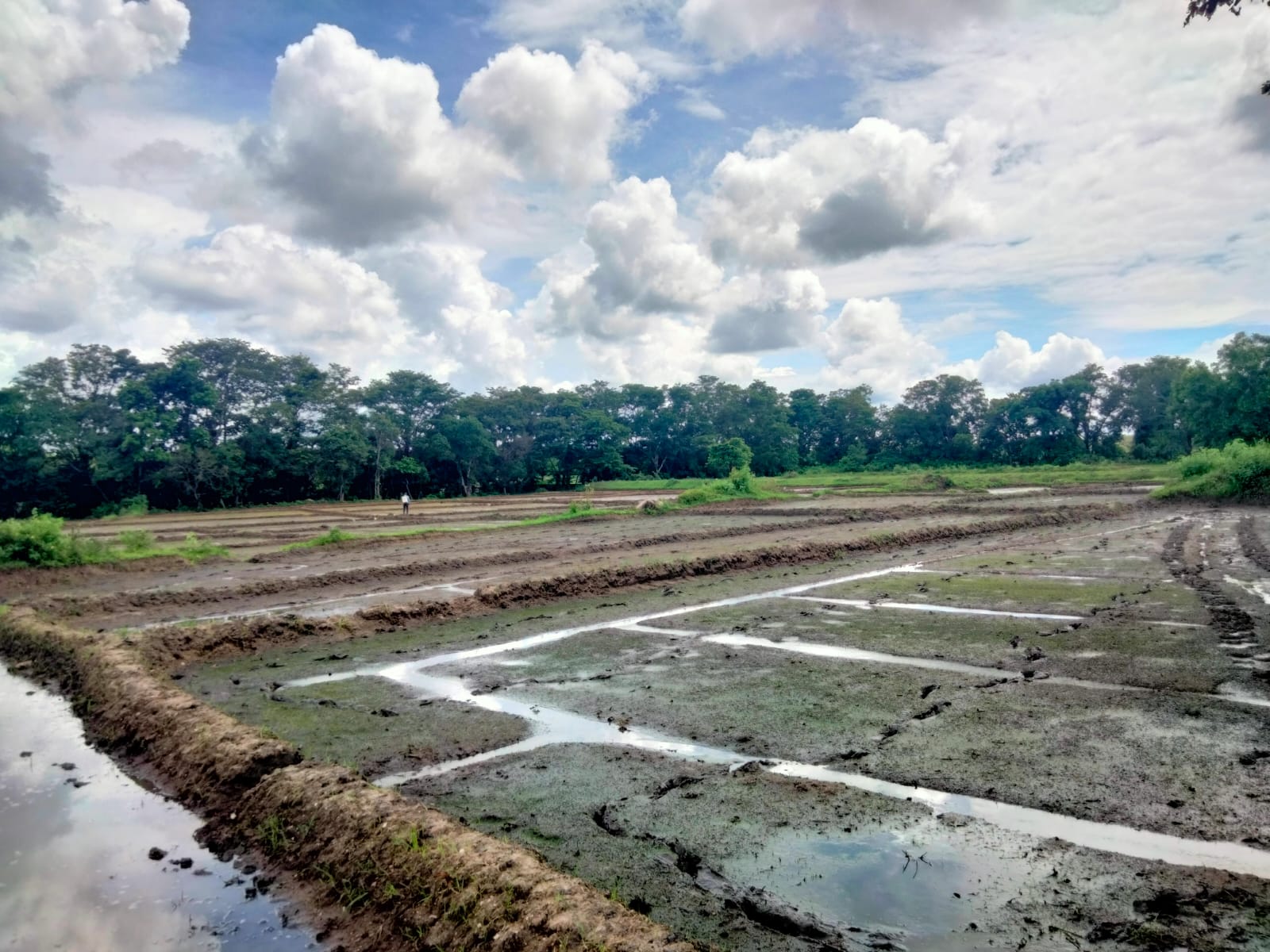A Look into the Elephant-Farmer Grievance in Minneriya

With the cultivations for the maha season commencing in all parts of the island, the grievance raised by the farmers in Minneriya every year at the beginning of the maha season is once again being raised. The allegation is that the government is not filling the Minneriya reservoir, which is the main source of water for farming in the region, to get the water needed for farming in the maha season. The farmers claim that the government refrains from filling the reservoir completely and allows part of the reservoir area to remain dry for the wild elephants in order to increase revenue earned from tourists who come to Minneriya to watch elephants. The government institution they accuse mainly is the Department of Wildlife and Forest Conservation. They claim that the Department of Wildlife and Forest Conservation pressurizes the Irrigation Department to not fill the reservoir completely. 'Who is more important, the farmers that produce rice for the nation or wild elephants?' is the popular argument raised by farmers. In other words, the farmers are asking whether farming which feeds the local populations should be sacrificed for the sake of the dollars earned from foreign tourists by retaining elephants on the dry reservoir land for them to view. This maha season, the issue is felt more intense than ever because Minneriya is no longer an isolated reservoir now that it has become a part of the Mahaweli scheme after the construction of the Moragahakanda reservoir. Now, the Minneriya reservoir is integrated into a complex irrigation scheme which expands over a vast geographical area and impacts many economic activities including agriculture. The objective of this article is to look into this water management problem by including the views of all parties.
The Minneriya reservoir was built by King Mahasen (276-303 AD) some 17 centuries ago but was dilapidated after the decline of the Rajarata civilization. It was renovated in the latter half of the colonial period. The Minneriya farming colony established in 1933 was the first step of a new farming revival that took place around the reservoir. Spread over 18.9 km, the Minneriya reservoir can fill about 110,000 acre feet of water and around 22,500 acres of paddy is cultivated with the water. The 32 km Elahera canal which was built by King Wasabha, brings water to the reservoir from the Amban ganga. The Minneriya reservoir provides water to Kawudulla and Kanthale tanks. In June-August every year, over 400 elephants gather on the dry reservoir area of the Minneriya reservoir. This area is a paradise for wild elephants in Sri Lanka because it is part of the eco system comprising of Minneriya-Kawudulla-Hurulu-Somawathi-Flood Plains National Park. After providing water for the yala season cultivations, the water level of the Minneriya reaches about 20,000 acre feet by this time of the year. During that time, some of the varieties of grass most preferred by elephants grow on the dry reservoir bed in abundance. This is the only occasion in which such a large number of wild elephants congregate in a single location and this natural phenomenon is popular among tourists as the "great elephant gathering of Asia." Thousands of local and foreign tourists flock to Minneriya to witness this phenomenon. Each foreign tourist is charged 25 US dollars to be admitted to the Minnariya national park, which means a considerable amount of foreign exchange is earned from it.

The allegation made by the farmers is that although filling the Minneriya reservoir in order to provide water required for the maha season cultivations should be completed by November, filling the reservoir to its full capacity is prevented or delayed with the objective of keeping the elephants roaming on the dry reservoir bed and earning income from tourists. As a result, the farmers do not receive sufficient water to cultivate all the arable lands they have. This is a critical factor concerning the livelihood of a large number of families that subsist on farming.

An officer from the Department of Wildlife Protection who wished to remain anonymous stated that the farmers do not understand about the foreign exchange that is earned from the tourists. According to him, income from paddy cultivation will circulate within the domestic economy but income from foreign tourists is foreign exchange that flows into the country from external sources. He stated that it carries high significance at a time in which the country is faced with an economic crisis.
T.B. Sarath, the Secretary of the All Island Agrarian Federation expressed the view that safeguarding the Minneriya Reservoir and the farmlands surrounding it which have been feeding people for thousands of years is the duty of the farmers, while safeguarding wild animals including elephants and making sure there is food for wildlife in the forests is the duty of the Department of Wildlife Conservation. He stated that smaller tanks and canals that are fed by the Minneriya reservoir are spread throughout the jungle and that the duty of the Department of Wildlife Conservation is to use them and create an environment in which the elephants can remain in the jungle throughout the whole year. Colombo-Batticaloa railroad is situated near one end of the Minneriya reservoir area and often, trains hit wild elephants in this part of the reservoir area. T.B Sarath claimed that authorities are yet to draw their attention to this hazard to the wild elephants. In his view, elephants should not be made to roam on the dry reservoir bed for months. Instead, sufficient food and water sources should be made available to elephants in the jungle to support the natural migration patterns of the wildlife and tourists should be facilitated to view elephants and other animals in their natural habitat.
Expressing his views on the matter, Priyantha Jayalath Kumara, the president of the Mathalawewa farmer association stated as follows. "People have been farming with the water from the reservoir long before the tourists started coming. There were elephants as well. The reservoir was filled. Tourists started coming much later. Now, the elephants are brought to a place that works for the tourism industry. Elephants come to the Minneriya during one part of the year. Then, when the rains come, the reservoir is filled with water. During that period the elephants migrate to others parts of the forest. This is a natural phenomenon that has been occurring. Now the Department of Wildlife is herding the elephants to one place for the tourists to view. Now, agriculture and tourism has been mixed up. Of course problems arise when the reservoirs that provide water for cultivations are used for tourism purposes instead of renovating the tanks in the forest and creating grasslands in the forest for the use of the elephants. This problem would be resolved by making sure food and water is available for elephants in the forest and taking the tourists into the forest to see the elephants as they do in Yala."
Another accusation made by the farmers is that elephants have to be kept in Minneriya in large numbers because the government has handed over large extents of land which used to be historic elephant crossings and elephant paths to multinational corporations and their crony businessmen for large scale single crop commercial cultivations. After sacrificing the forest for the cultivations carried out by these businessmen, the Minneriya reservoir area is kept dry for the elephants to roam, creating an elephant-human conflict. In their view, this process will result in the farmers giving up their cultivations, paving way for more land to be given to multinational corporations and cronies of the government. Ashoka Karunasena who presides over the Polonnaruwa District chapter of the All-island Farmer Federation stated that the government has knowingly let both the elephants and farmers get caught in a trap. He is of the view that a plan is under way to discourage people from farming, with the use of strategies such as privatization of water and not storing sufficient water in tanks.
In a context where draft legislation is being presented for water management, his argument regarding privatization of water too appears to be significant. Ever since open economy was introduced to Sri Lanka in 1977, the World Bank has been promoting the process of privatizing water. Millions of dollars have been pumped to the country as aid for this purpose over two decades. In the mean time, the World Bank has recognized as a policy that water is a consumer commodity and not a public resource. There is also a history of farmers having to make tremendous effort to thwart attempts made by the government to privatize water in the guise of water management.
On the other hand, management of irrigation water is handled exclusively by officials of the central government. In a country where everything is politicized, it is ridiculous to even think that the decisions of those officials will not be interfered with for the sake of political interests.
Expressing their views regarding this matter, the officers involved in irrigation water management admitted that the Minneriya reservoir needs to be filled to its full capacity. They further stated that they have no plans to fill the reservoir partially this time. However they too admitted that there was a delay in filling the reservoir during the maha season this year. They stated that the Minneriya reservoir is connected to a complex system of irrigation. Generally, harvest from the yala season is fully reaped by the first week of September. By that time, the water level of the Minneriya reservoir drops to about 20,000 acre feet. The reservoir should be filled at least by the first week of November if water is to be provided for maha season cultivations. There are 28 kilometers of canals connected to the Minneriya. A minimum of 75,000 acre feet of water should be filled in order to provide water to all these canals. At least 55,000 acre feet of water should be brought from the Moragahakanda reservoir to the Minneriya in order to achieve this. This requires 18 days. As the water moves from Moragahakanda to Minneriya, cultivations in Elahera, Bakamoona etc. too need to be provided with water. On the other hand, water has to be provided to Kawudulla and Kanthale tanks via the Minneriya reservoir because these tanks support the cultivation of 18,000 acres and 25,000 acres of farming lands respectively. However this year, the water in the Moragahakanda Reservoir has dropped to 30% due to the reduction of rains in the feeder area. Therefore, water could not be released from the Moragahakanda Reservoir. With this delay, a sufficient volume of water has not been diverted to the Minneriya reservoir by the beginning of the maha season. According to officials, that is the basis of the dispute among farmers. At the same time, they said that water required for the 25,000 acres of corn crops that will be cultivated by the large-scale companies in the Kantale district also will have to be provided to the Kanthale tank from the Minneriya reservoir.
Although there are contradictions and disagreements among the views expressed by these parties, some main points can be identified. Firstly, it appears that both farmers and elephants who are naturally entitled to water as a public resource have been disregarded. While elephants are unable to raise their voice to protect their rights, the voice of the farmers has been disregarded in the decision making process. High level government officials from a number of government departments meet in Gannoruwa to make decisions related to irrigation in the whole island. Their decisions are then conveyed to the farmer associations. Farmers are expected to adhere to these decisions. Priority is given in decision making to electricity generation and tourism while farmers and their concerns are taken into consideration next. Farmers face further confusion due to the lack of coordination among different government departments when decisions related to cultivations on each season are made. Farmers have to decide on the variety of seed paddy they require based on the time period in which they receive water. Some varieties of paddy require longer periods to produce yield. Forms have to be filled and handed over to the authorities on time by the farmer associations for the farmers to receive fertilizer. When water has not been provided, farmers do not know how many acres of land they will be able to cultivate during that season. As a result, they are not able to predict how much fertilizer will be required. Thus, farmers face difficulties due to the lack of coordination between these different government bodies. Officers from the Wildlife Conservation Department do not attend meetings held to decide on irrigation. The Ministry of Tourism is represented in these meetings. Thus decisions made regarding wild elephants during water management related decision making are founded on tourism related objectives. On the other hand, the tanks in the forest are hardly ever renovated, as a result of which elephants are not able to find water in sufficient quantities in the forest. Due to the destruction of forests elephants have lost grass lands to feed on, and elephant passes that used to enable them to travel between different forests. A conflict is created between the elephants and the farmers when elephants come to the villages in search of food.
This conflict is escalated by the decision made by the government to prioritize releasing forest lands and provide water to large scale companies for single crop cultivation. Government strategy to promote tourism by showcasing elephants runs parallel to this. Elephants would not remain on the Minneriya reservoir area if the forest systems are properly maintained. Rains usually start with the beginning of the maha season and the elephants would follow their annual migration patterns and migrate to other forest areas. They would return to Minneriya in the next dry season. However, with the deforestation, and also the fact that Minneriya reservoir is no longer a solitary reservoir but a part of the Mahaweli scheme means that the situation is now controlled by humans. The control is with the government. Farmers and elephants are both victims in this scenario. On one hand, both these parties are not involved in the decision making. On the other hand, the fact that they are not viewed as priorities, make these decisions unfavourable to them. Do we need an economy that disregards the needs of the farmers and wild animals who are the true inheritors of land and resources. Who does such an economy serve? If the farmers choose to give up cultivating these lands, can the maze or alovera crops that will be cultivated in these lands by multinational corporations provide food for the people of this country? While the forests and water are squandered for the profit of mankind, elephants keep getting shot at, getting killed by speeding trains and dying due to jaw-bombs. Should not these be factors that require serious consideration in relation to the future of a country? We are unable to rise from the abyss of being deceived by so called illusion of development. The way out that is presented to us, is another illusion of development. It is a well-known saying that the first mistake in history ends in tragedy, and the second time the same mistake ends in absurdity. The destructive train of this outrageous situation is moving forth at the expense of the real inheritors of the country's resources, the common people and the poor.





